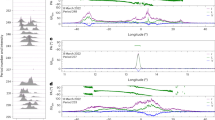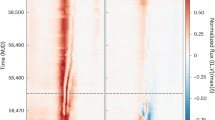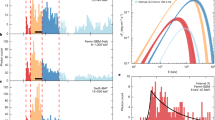Abstract
IT is generally accepted that pulsar emission is produced by material ejected from the surface of rotating neutron stars near the magnetic poles. The charged particles are thought to radiate as they are accelerated along magnetic field lines or as they approach the “speed of light cylinder”. But the exact mechanisms by which emission is produced over the full range of the spectrum from gamma rays to radio frequencies1,2 are not understood.
This is a preview of subscription content, access via your institution
Access options
Subscribe to this journal
Receive 51 print issues and online access
$199.00 per year
only $3.90 per issue
Buy this article
- Purchase on SpringerLink
- Instant access to full article PDF
Prices may be subject to local taxes which are calculated during checkout
Similar content being viewed by others
References
Pacini, F., and Rees, M. J., Nature, 226, 622 (1970).
Komesaroff, M. M., Ables, J. G., and Hamilton, P. A., Astrophys. Lett., 9, 101 (1971).
Alfvén, H., and Carlqvist, P., Solar Phys., 1, 220 (1967).
Carlqvist, P., Solar Phys., 7, 377 (1969).
Heiles, C., and Rankin, J. M., Nature Physical Science, 231, 97 (1971).
Sturrock, P. A., Astrophys. J., 164, 529 (1971).
Author information
Authors and Affiliations
Rights and permissions
About this article
Cite this article
GLENCROSS, W. Radiation from Flares near the Magnetic Poles of Pulsars. Nature 237, 157–158 (1972). https://doi.org/10.1038/237157a0
Received:
Issue date:
DOI: https://doi.org/10.1038/237157a0



